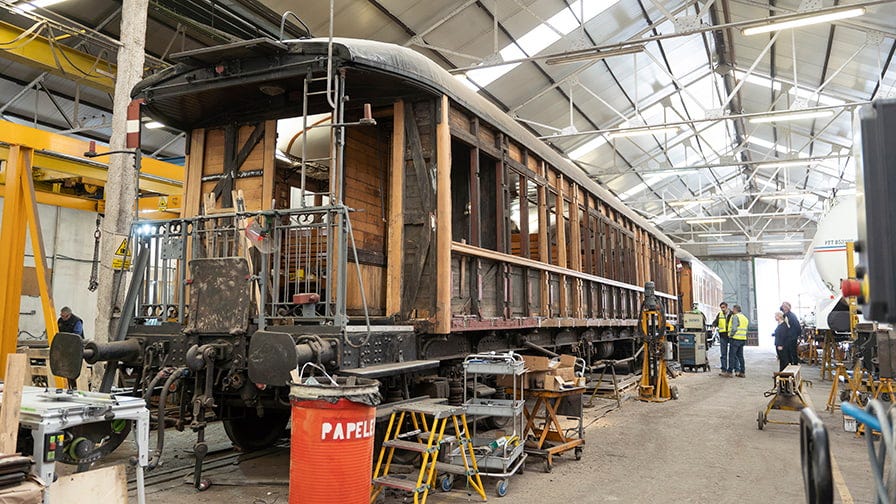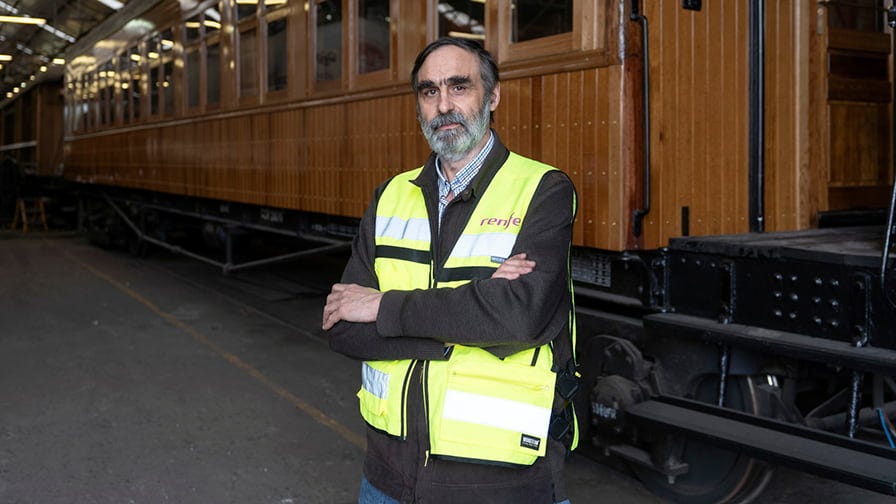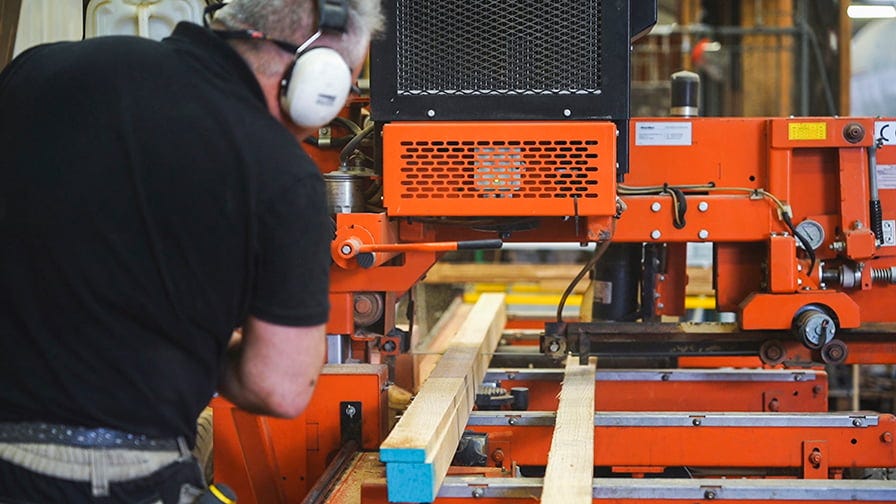Restoration of Vintage Carriages for a Tourist Train in Spain
By Juanma Miranda, Madera-Sostenible

Video editing and production: Ignacio González, UTOPIA FILMMAKERS
Wooden passenger cars of this type were produced in Spain until the 1930s. A total of 406 units were made and used as third-class carriages on passenger trains running along the Spanish coast. Even when metal wagons were introduced, the railway companies were reluctant to order them because the summers in Spain were hot, and the wooden wagons were easier to keep cool.




In 1972, the third class for passengers was abolished, and companies faced a choice - upgrade the wooden cars to second class status or stop using them. However, the upgrade price was too high, and the purpose of the wagons was changed. They turned into housing, a mobile workshop, a shop, a school, and one such car is currently used as a meeting room in the RENFE Viajeros office.
Vintage wooden carriages were reintroduced in the 80s with the introduction of the tourist "Strawberry Train" - a top-rated journey in vintage carriages from Madrid to Aranjuez and back through many of the attractions of the Madrid community.


The "Strawberry Train" consists of four passenger cars and two vans. However, moisture and time gradually destroyed the wooden elements of the structure, so there was a need for a complete renovation.
"We immediately ran into a problem: we needed drawings of the wagons so that the person who would repair them could restore the wagons while maintaining their original design," says Juan José Peña, technical specialist at RENFE Viajeros. "We proceeded from the Riga Charter, which, on the one hand, tells us that the purpose of reconstruction is to preserve and reveal the importance of cultural heritage, and on the other hand, that authenticity must be preserved in this process (including the method, design, materials, and applications), convincingly testifying to the significance of this object."


Where the original plans indicated that the wood should be oak, oak was used. In other cases, where plans told that the exterior cladding would be in teak wood, which is not currently available, the wood of similar characteristics, "iroko", also known as "African teak", was chosen.
"We opened up the insides of these cars, not knowing what awaits us, based solely on plans more than a century old because the cars themselves are almost a hundred years old."




The four carriages of the "Strawberry Train" were built in 1920, 1923, 1927, and 1929 by different manufacturers, so they differed in design. The last, most modern car is shown in the video. Interestingly, the oldest one (1920) was in the best condition.
In this project, woodworker Emilio González Rodriguez was invited to work with the wagons, particularly for producing wooden elements. He arrived at the workshops of RENFE Viajeros with his Wood-Mizer LT20 mobile sawmill.


"I'm a Wood-Mizer fan! This machine is my best assistant," says Emilio. "Thanks to my sawmill, I did most of the work to restore the cars. The Wood-Mizer sawmill doesn't just saw logs. This machine makes precise cuts, which is very important when you make separate details. I saved a lot of both wood and time."
The LT20 sawmill has a built-in electronic device that saves the required board dimensions in the microprocessor memory so that the machine works flexibly and quickly.


At the beginning of the project, 16 beams were required for each car. In the end, there were maybe 40. Emilio made parts for all the windows and shutters – twenty in each wagon. Then he moved on to interior details: handrails, railings, floorboards. "And you know what is important to me? I did it myself! A typical sawmill would need at least one more person involved."
Emilio’s sawmill is approved for transport by road. "Because my Wood-Mizer has a diesel engine, I brought it with my car. Everyone was amazed and said: "Yes, this sawmill is what we need here!"


"This is a fast and accurate machine that will last you a lifetime if you take good care of it. Ideal for a carpenter. You can use it in the workshop and in general anywhere. The Wood-Mizer distributors in Spain taught me how to operate the sawmill. I can always contact them if I have any questions," explained Emilio.


The project also involved restorer, Andrea Novosad. Her task was to restore the preserved elements. She also treated wooden parts with wood-borer preservatives, color matched with dyes, and finished them. For metal parts, the process was similar; it involved grinding and painting with anti-corrosion and protective enamel.


"New parts are created with the use of the Wood-Mizer sawmill. My job is to protect them, paint them and finish them," says Andrea. "The great thing about these cars is that they have amazing engineering behind them. This is not just a box covered with wooden slats. They are well-thought-out fitting, unloading, and fastening systems that need to be learned and preserved. It is incredible luck that these old carriages are not lost!"






***

